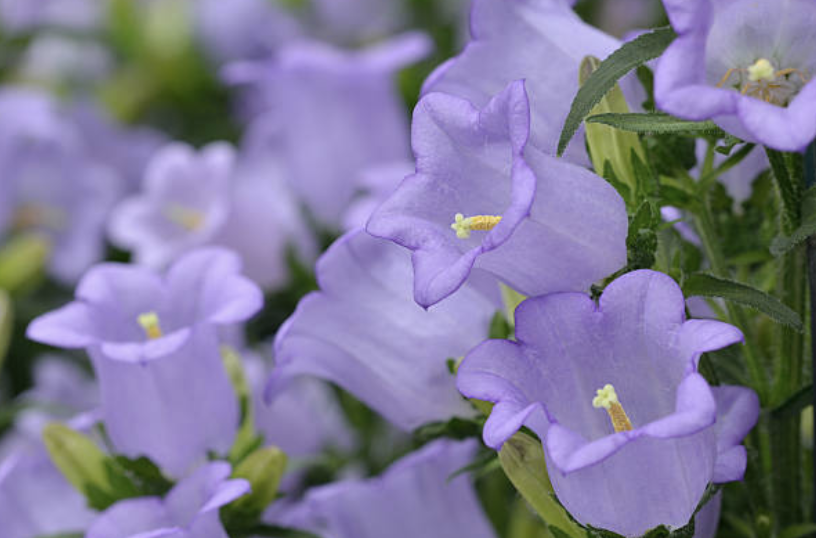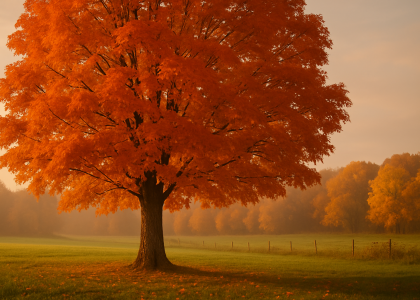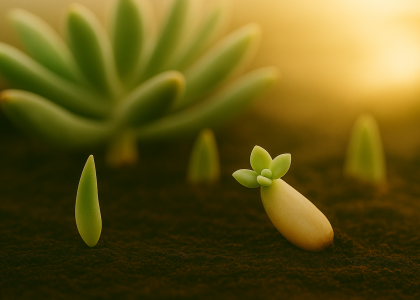More than just a flower, it’s a gentle reminder to open up, face the sun, and bloom bravely.
What Are Canterbury Bells?
Delicate yet bold, Canterbury Bells (Campanula medium)—often affectionately called “cup-and-saucer flowers” or “goblet bells”—are a showy biennial bloom famous for their upturned bell-shaped flowers that resemble little smiling cups. Some even say they look like they’re whispering joy with every breeze.
Unlike shy blossoms that droop down, Canterbury Bells bloom upright, confidently facing upward or gently fanning outwards, as if smiling back at the world. Their cups are thicker, deeper, and broader than those of other campanulas, giving them a plush, almost luminous appearance.
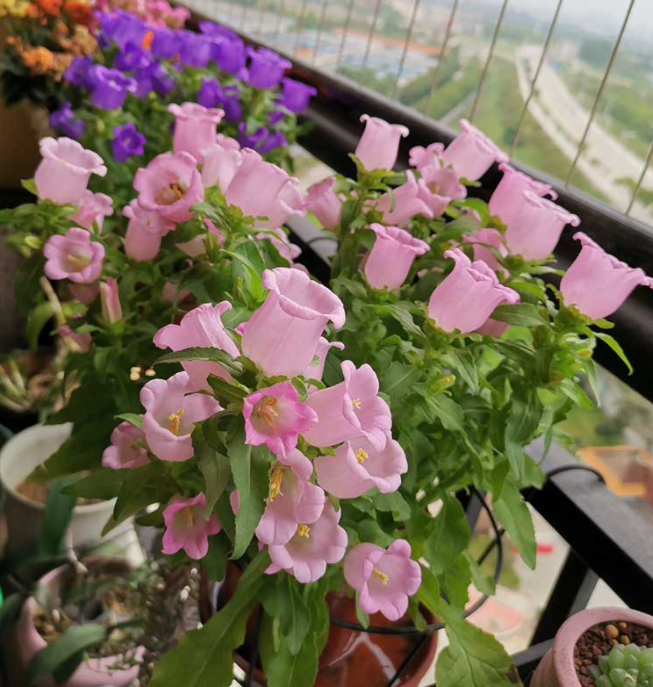
A Closer Look: Appearance & Growth Habit
- Flowers: Tubular, bell-shaped blossoms in soft pastels to bold purples—lavender, pink, white, sky blue. Blooms can reach 2–3 inches in width.
- Stems: Sturdy, upright, 2–3 feet tall, perfect for garden borders or cut flower displays.
- Leaves: Lance-shaped, mid-green, slightly serrated.
- Bloom time: Late spring to early summer (in their second year).
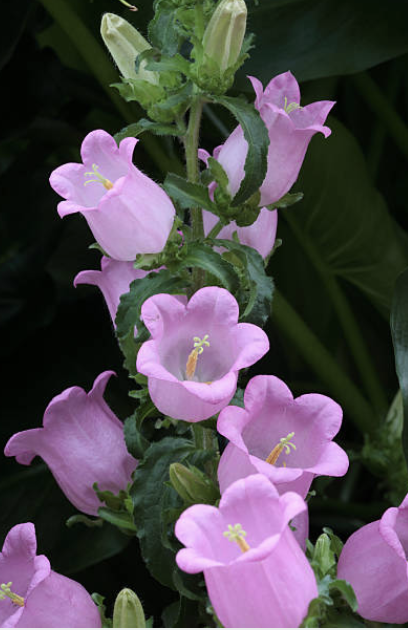
How to Grow Canterbury Bells
Light & Temperature
- Full sun to partial shade
- Thrives in mild climates; tolerates USDA Zones 5–8
Soil & Watering
- Loamy, well-drained soil with neutral pH
- Keep soil consistently moist, but never soggy
- Mulch base in warm regions to retain moisture
Feeding
- Apply balanced fertilizer (10-10-10) monthly during active growth
- Avoid excessive nitrogen to encourage blooming over leafy growth
Pruning
- Deadhead to extend blooming season
- Cut back after flowering to shape and tidy the plant
Propagation: From Seed to Smiling Bloom
Canterbury Bells are biennial, meaning they grow foliage the first year and flower the second.
Sowing Seeds
- When: Sow indoors in late spring or early summer
- How: Lightly press seeds onto moist soil—don’t cover! They need light to germinate
- Germination: 14–21 days at 65–70°F
- Transplant: Once seedlings have 2–3 sets of leaves, harden off and move outdoors
Pro Tip: For consistent yearly blooms, stagger your plantings each season.
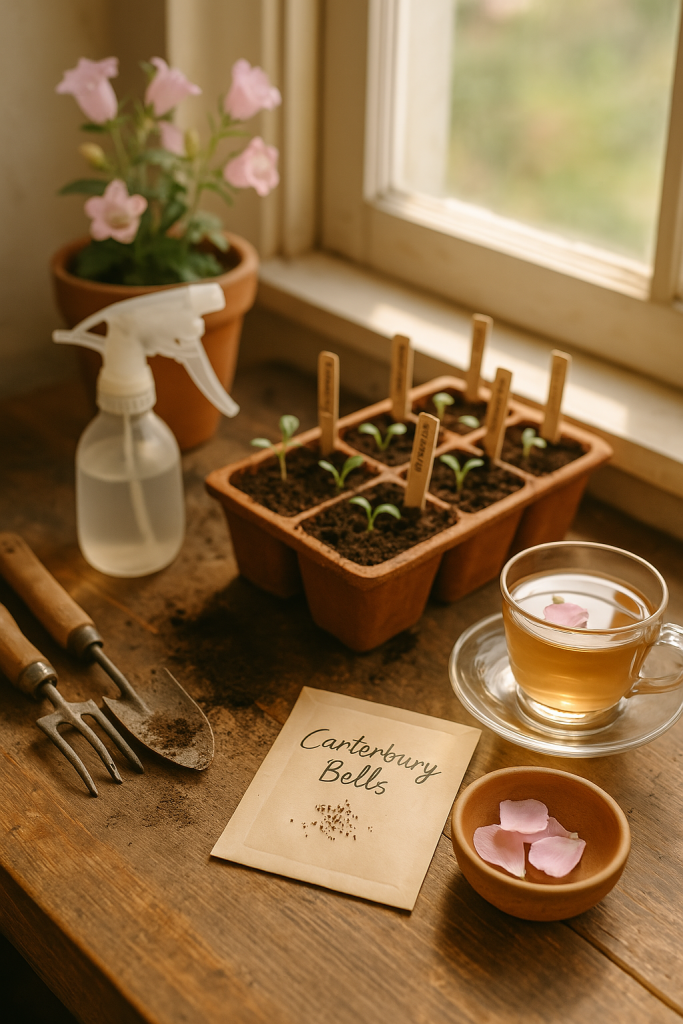
Functional Benefits Beyond Beauty
Ornamental Delight
- Stunning in cottage gardens, cut flower bouquets, and wildflower-style beds
- Long-lasting as cut flowers in water—up to 10 days!
Edible Blossoms
- Petals are edible and mildly sweet—use to decorate cakes, cocktails, or salads
- Always harvest from pesticide-free plants
Folk Medicine & Symbolism
- Traditionally used in Europe for throat soothers and teas
- Symbolizes gratitude and constancy—a popular flower in Victorian “language of flowers”
Adding Cheer to Your Home
Canterbury Bells are made for people who love softness, elegance, and a touch of whimsy.
Try planting them:
- Along picket fences for that classic English garden feel
- In ceramic pots near windows or entrances
- As part of Mother’s Day floral arrangements
- Pressed in bookmarks or journals for a keepsake from your garden
Every Canterbury Bell looks like it’s just about to say ‘hello’.
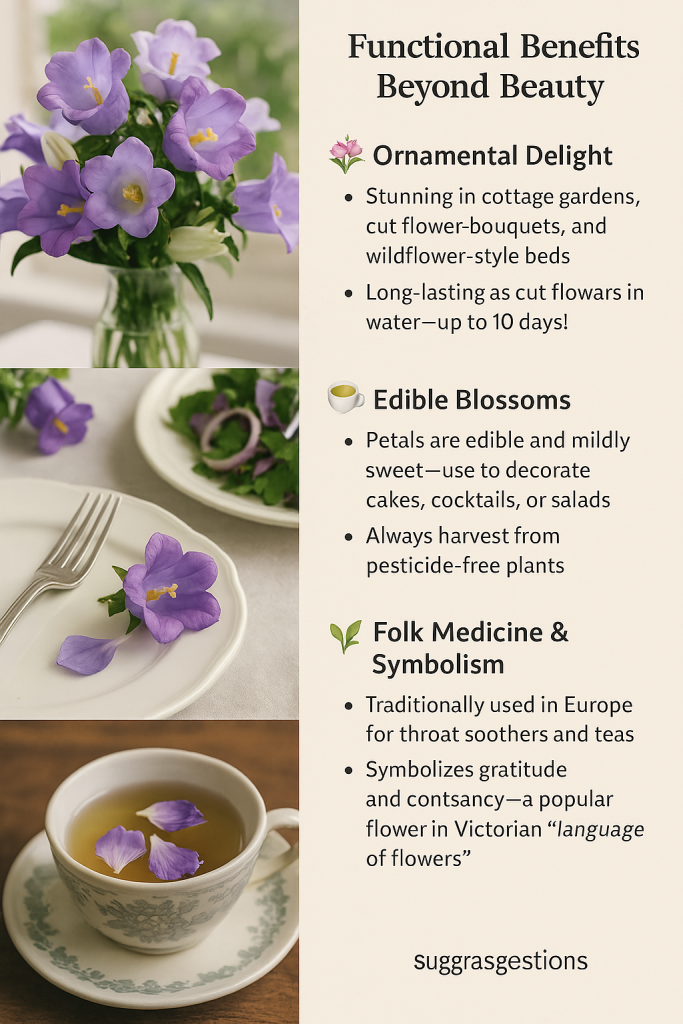
Popular Varieties to Try
| Variety Name | Color | Notes |
| Champion Blue | Violet-blue | Great for cutting, sturdy stem |
| Calycanthema Mix | Mixed pastel | Classic “cup-and-saucer” shape |
| Double White | Pure white | Elegant and long-blooming |
| Pink Shades | Rose-pink | Romantic and soft-toned |
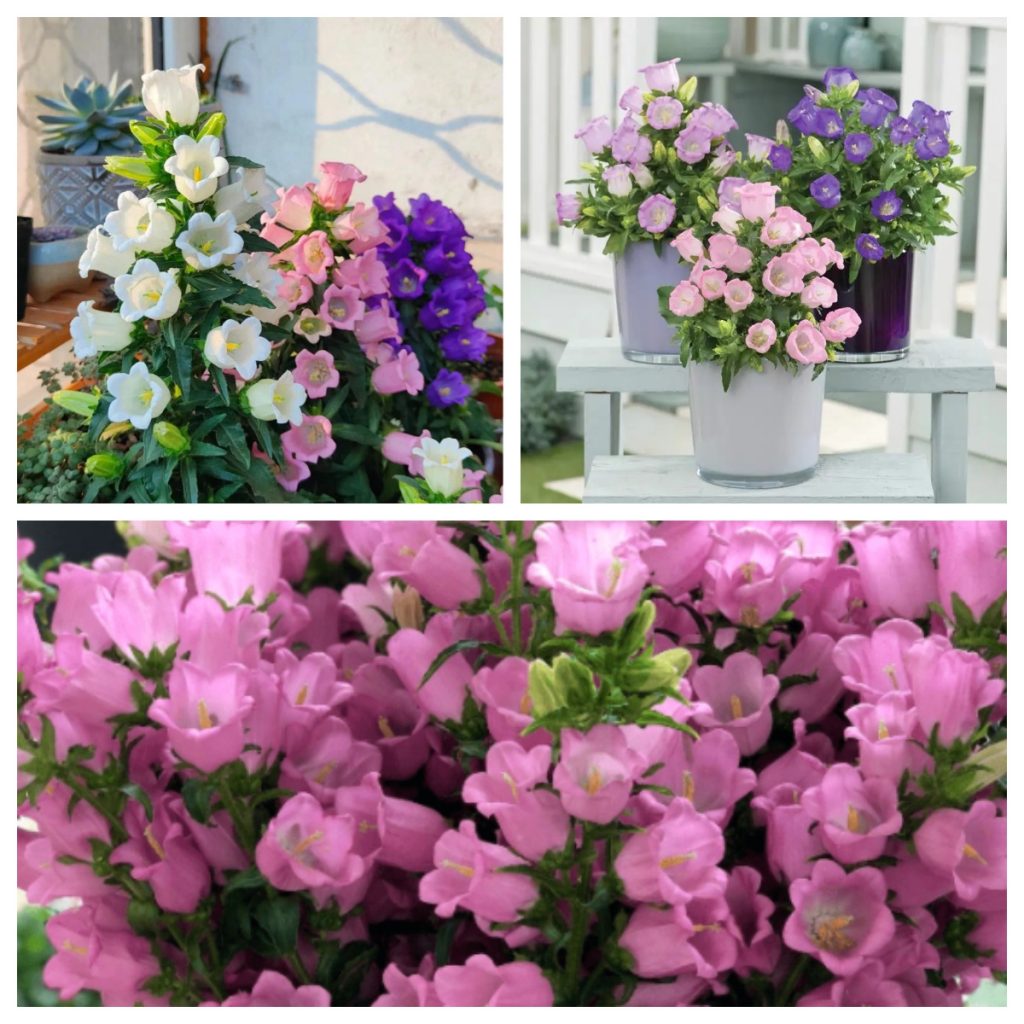
FAQ: Growing Canterbury Bells
Q: Are Canterbury Bells annual or perennial?
A: They’re technically biennials—grow leaves the first year, bloom the next, then die. But with staggered sowing, they feel like perennials!
Q: Do they reseed?
A: Yes! If you let some flowers go to seed, you’ll get volunteer seedlings next year.
Q: Can I grow them in containers?
A: Absolutely. Just choose a pot that’s at least 10–12 inches deep.
Q: Are they safe around pets?
A: Yes—Canterbury Bells are non-toxic to dogs and cats.
Q: Do they attract bees?
A: Yes—and butterflies too! Their bell shape makes them pollinator-friendly.
Final Thought: A Bell That Rings with Joy
Growing Canterbury Bells is like welcoming gentle laughter into your garden.
They're not demanding, not loud. They simply bloom with quiet confidence, offering beauty with a touch of playful charm. Whether you're starting your first flower patch or looking to add character to a cottage garden, these flowers will greet you with joy—season after season.


